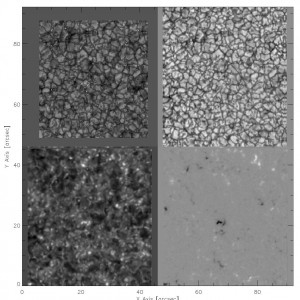
The performance of the recent JPEG2000 Part 10 standard, known as JP3D, is evaluated for the lossless compression of several types of solar data-cubes.

We explore the differences in:
a) The compressibility of broad-band or narrow-band; I or V stokes profiles b) Compressing data in x,y,lambda packages at different times or data in x,y,t packages of different wavelength c) Compressing a single large data-cube or several smaller data-cubes d) Compressing data which is under-sampled or super-sampled wrt the diffraction cut-off.
The performance of the 3D compression varies with the data-type: G-band are the most compressible ( 3 bits per voxel), while Stokes I are the less compressible ( 7 bits per voxel). The gain against a 2D compression varies from -50% to -30% of the original data volume. The gain in ordering data in x,y,lambda,time or x,y,time, lambda is apparently negligible. The spatial correlation present in data which are super-sampled wrt the telescope cut-off frequency leads to a +33% in compression rate (but on a 4x data!). As expected, JP3D automatically compress the same data-cube to the same BPV, whether it is provided as 16bit or 32bit data.
Here are the data which have been used for this analysis




More Stories
Scientists Develop New Model to Estimate Solar Irradiance Variation Over the Last Five Centuries
UNITOV and NSO Scientists Predict Solar Cycle 25
La grande aurora su Roma del 4 febbraio 1872